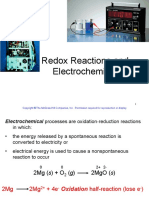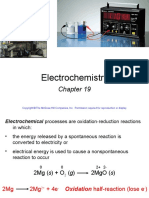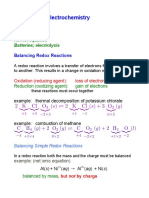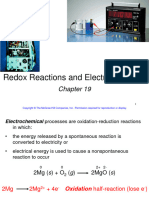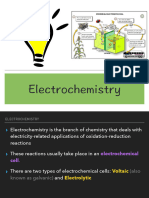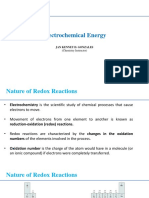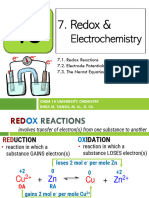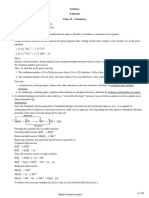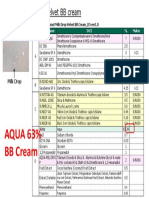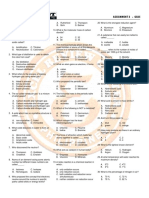0% found this document useful (0 votes)
63 views79 pagesChapter 1 - Electrochemistry
The document covers key concepts in electrochemistry, including oxidation-reduction reactions, balancing redox equations, and the functioning of galvanic cells. It outlines learning outcomes for students, such as identifying oxidizing and reducing agents, calculating standard cell potentials, and understanding corrosion and its prevention. Additionally, it discusses the relationship between electrical energy and redox reactions, including the Nernst equation and spontaneity of reactions.
Uploaded by
algabrecarmeljeanCopyright
© © All Rights Reserved
We take content rights seriously. If you suspect this is your content, claim it here.
Available Formats
Download as PDF, TXT or read online on Scribd
0% found this document useful (0 votes)
63 views79 pagesChapter 1 - Electrochemistry
The document covers key concepts in electrochemistry, including oxidation-reduction reactions, balancing redox equations, and the functioning of galvanic cells. It outlines learning outcomes for students, such as identifying oxidizing and reducing agents, calculating standard cell potentials, and understanding corrosion and its prevention. Additionally, it discusses the relationship between electrical energy and redox reactions, including the Nernst equation and spontaneity of reactions.
Uploaded by
algabrecarmeljeanCopyright
© © All Rights Reserved
We take content rights seriously. If you suspect this is your content, claim it here.
Available Formats
Download as PDF, TXT or read online on Scribd
/ 79




